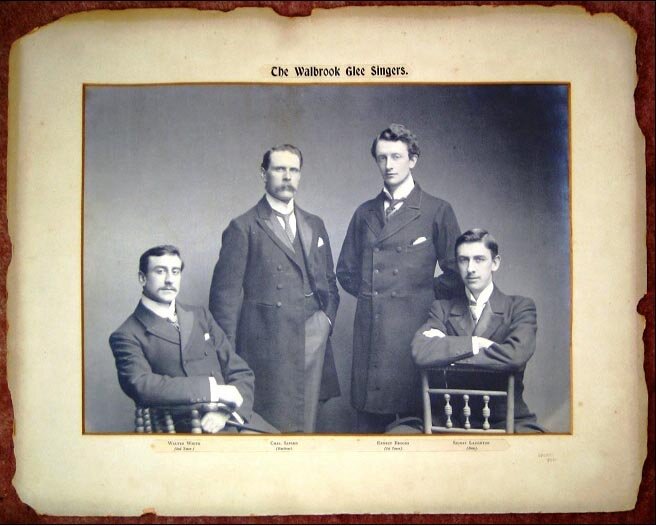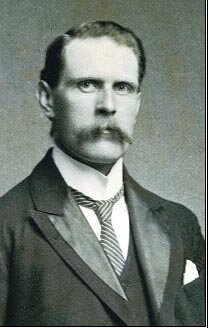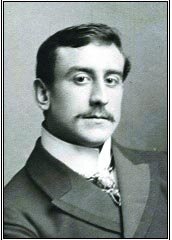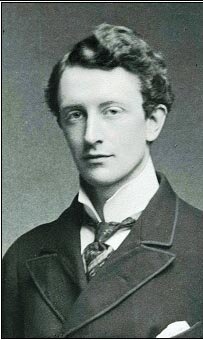

Maundy Charles Rodgers Rodgers – Indian Ancestry
My long standing friend, Susan Rodgers (different spelling and no relation!) knew very little about the early life of her father, Winston or her grandfather, Maundy. How different was she from so many of us? She was, therefore, very interested when I said I would like to research her family history.
Susan’s father, Winston Hermann Malcolm Rodgers, was Maundy’s eldest son, and had come to the UK from India in 1931 having been born in Rawalpindi (now Pakistan) in 1910. The family came over a little later. In 1940 Winston married an English girl, Dorothy Beatrice Harvey, and they had Susan in 1945 and Hilary in 1949 and lived in Ealing.
The main problem was, of course, how to research Asian ancestors? I started researching in April 2012 before findmypast had started to put the British Library Asia and African Records online. I, therefore, had to make the journey to the British Library and learn how to access the records I required. Not an easy task!
I made a total of seven visits, to the British Library, over two years. The helpdesk within the Asia and African Records is exceedingly helpful, dependent a little on who is on duty on the day! I also joined FIBIS which has an extremely useful website for Asian research[1].
Winston’s father, Maundy Charles Rodgers Rodgers was born in 1884 in Ootacamund which is now in the Indian state of Tamil Nadu. It was, and still is, a very popular hill station in the province of Madras which was, at the time, an administrative subdivision of British India.
Searching the Baptism records for Madras, which are on open shelves, did not substantiate Maundy’s baptism date. Nor did a search on the other two provinces of Bombay and Bengal come up with any proof.[2] There did not appear to be any baptism record for him.
However Susan knew that her grandfather had been a doctor in India and had been married to Alice Rose “Maloney” and that he was Roman Catholic. I then searched for Maundy and Alice’s marriage. I found a certificate of marriage between Maundy Charles Rodgers aged twenty-five, Assistant Surgeon Rawalpindi, whose father’s name was registered as Wm. Bernard Peters, and Alice Rose Baroni aged twenty-five of Calcutta, whose father’s name was Simion Baroni (obviously Susan had misheard or misremembered Alice’s maiden surname). The marriage had taken place in the Catholic Cathedral Moorgheehatta, Calcutta, Bengal, India on 20th July 1909 (and with his age also confirms Maundy’s year of birth).
As an Assistant Surgeon, Maundy could have been in the Subordinate Medical Service.
The Subordinate Medical Department (sometimes abbreviated to Sub Medical Department) was formed by the East India Company to provide medical services to Indian Natives in 1812, and the service lasted until Independence. The staff were recruited in India and the senior positions were occupied by persons of British origin. In later years, Anglo-Indians and then native Indians were able to gain the more senior positions. [3]
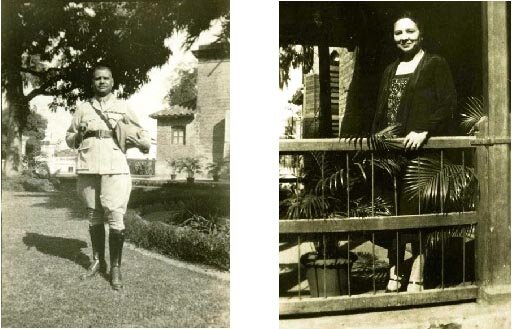
Above are photographs taken in India, probably around 1930, showing Maundy Rodgers in Army uniform and his wife Alice (née Baroni) Rodgers
The reason for Maundy Charles Rodgers’s change of surname from Rodgers to Peters and back to Rodgers cannot be totally explained. Why Maundy enlisted into the Indian Medical Service as Peters initially but then changed to Rodgers at the time of his marriage is also unknown. The fact that his baptism record cannot be found (baptism rather than birth dates were registered in India,) under either of the surnames, could be due to the fact that a large number of Indian baptism, marriage and burial records were lost due to fires and movement of records etc over the years.
Indeed in a later letter from the Deputy Director General of the IMS New Delhi to the Under Secretary of State for India in London, shown in Maundy’s Record of Service, it says that Maundy stated at the time of his appointment that his parentage (both father and mother) was Eurasian.
Assuming Maundy’s grandfather was British, there wasn’t at the time a large pool of marriageable British women in India from which the lower echelons of British men could have chosen wives. Instead they entered into marriage or long term relationships with country born women who might be East Indian or Eurasian.[4]
The British Library has many bound volumes, again on open shelves, of the Indian Army List. Within the volume for 1906 I found Maundy Rodgers Peters, aged twenty-two, as Assistant Surgeon 4th Class, based in Camp Mullah Minsoor, NW of Rawalpindi, Pakistan with a date of joining as 5th March 1906. I followed his medical career through the volumes. In April 1910 and 1911 he was entered into the List as Maundy Charles Rodgers Rodgers and was still an Assistant Surgeon 4th Class. At some point prior to the war years (two pages of service records show different dates of 1911 and 1913) he became an Assistant Surgeon 3rd Class and on 5th March 1918 he was appointed to Assistant Surgeon 2nd Class.[5]
Maundy served as a doctor in the Great War, with the Expeditionary Force A, in France from September 1914 to 31 December 1915.
In the First World War the British Indian Army in the British Raj sent Indian Expeditionary Forces, with over a million troops, to serve with the British Army and her Allies in various theatres of war. Force A, under the command of General Sir James Willcocks, served on the Western Front, attached to the British Army.
Two Army Corps, made up of four divisions, were sent from India:
· one infantry corps, the 1st Indian Corps comprising two divisions: 7th (Meerut) Division and 3rd (Lahore) Division simply known as 'Lahore' and 'Meerut' Divisions, to distinguish them from the 3rd and 7th British divisions
· one cavalry corps, formed on arrival in France as the Indian Cavalry Corps: 1st Indian Cavalry Division and 2nd Indian Cavalry Division
The Indian Expeditionary Force A arrived in the port of Marseilles between the end of September and mid October 1914.The Indian Force A was deployed to the Ypres Salient. In the early weeks of the war it took part in the First Battle of Ypres from October to November 1914. In the early spring it assisted in the Allied offensive in French Flanders against the Germans at the Battle of Neuve Chapelle on 10th-13th March 1915, at the Battle of Aubers Ridge on 9th May 1915, at the Battle of Festubert on 15th-27th May and at the Battle of Loos on 25th September - 8th October 1915.
During the winter months of November and December 1915 the two Indian infantry divisions were removed from the Western Front and were sent to the Mesopotamian theatre of war. On 13th August 1915, General Sir John Nixon, commanding Indian Expeditionary Force D in Mesopotamia, requested one of the Indianinfantry divisions in France as reinforcements for his advance on Baghdad. Coincidentally, on the same day, the Secretary of State for India, Austen Chamberlain, told the Viceroy of India that he was anxious for the Indian infantry to be withdrawn from France before they had to endure another winter. The two divisions were due at Basra in December, but their departure from Marseilles was delayed because of fear of submarine attack. [6]
Maundy’s service record shows him in Mesopotamia (Iraq) from January 1916 to 22nd July 1917. This shows he followed The Indian Force A (as above).
The Meerut division participated in the battles at the Sheikh Sa'ad, Wadi, Hanna, Dujailia, and the Sannaiyat. The Meerut and Lahore Divisions would eventually become part of the 1st Indian Army Corps, part of the newly formed Mesopotamian Expeditionary Force, participating in the capture of Baghdad in March 1917. [7]
Maundy’s Medal Card showed that as a 3rd Class Assistant Surgeon in the Indian Subordinate Medical Division (ISMD) he had been awarded the 1914 Star Medal, proving he was in France before the 22nd November 2014 qualifying date, and the British War Medal. Both were issued in India. He would also have been awarded the Victory Medal.
On 5th September 1922 Maundy was promoted to Assistant Surgeon 1st Class Indian Medical Department (IMD).
On 5th June 1936 Maundy was commissioned as a Lieutenant Senior Assistant Surgeon.[8] Assistant Surgeons 4th, 3rd and 2nd class were “warrant” officers
In March 1939, aged fifty-five, the age of compulsory retirement from the IMD, he was entered as Captain and Senior Assistant Surgeon at the British Military Hospital Jubbulpore. He was retired in London on 11th January 1940 and he was awarded 420 Rupees per month (just over £4 at that time) as a retirement pension, for his thirty-three years of qualifying service.[9]
I then decided to find out a little more about Alice Baroni, Maundy’s wife. She was also born in 1884, but in Bassein, West Bengal, India. Her father was Simion Antoine Edouard Baroni born in 1848 in Toulon, France. Her mother was Martha May Thet, born in 1858 in Mandalay, Burma. Martha and Simion were married in 1879. Apparently Martha’s father was She Ya Bho Min, and her mother was U Pyi Pa Diaang Bo Thein. I gleaned this information from Sharon Birds and from Family Search.[10] Sadly their dates and places of baptism or marriage could not be confirmed at the British Library or online.
Maundy, Alice and their other two sons Terence and Desmond moved to England and were living in Ealing from 1939 to 1948. They then moved to Ruislip. Alice died in 1960, aged seventy-six, and Maundy moved to live with his son Winston and their family in Gerrard’s Cross Buckinghamshire. He died in 1964 aged eighty.
Anne Rogers This email address is being protected from spambots. You need JavaScript enabled to view it.

